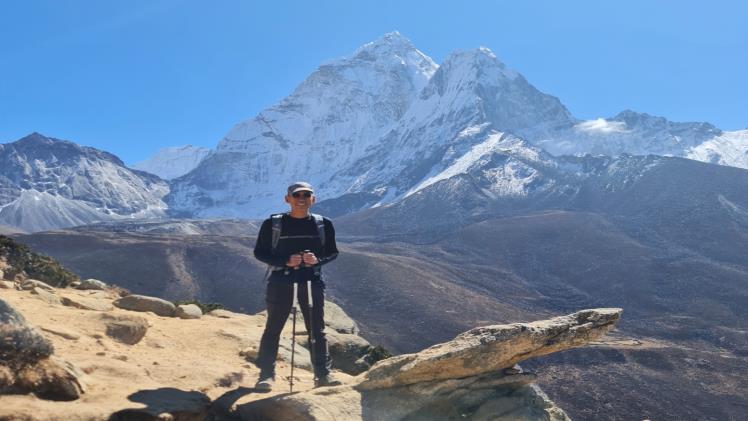Nepal vs Bhutan: Which Himalayan Gem Should You Visit?
Choosing between Nepal and Bhutan for your next adventure can be a tough call. Both countries sit high in the Himalayas, boast rich cultural traditions, and offer breathtaking mountain scenery. But when it comes to the actual experience, they differ in ways that could influence your decision — from trekking styles to cultural interactions, travel costs to accessibility.
Whether you’re drawn by spirituality, nature, or high-altitude trails, this comparison will help you figure out which destination is the best fit for your next journey.
1. Trekking Experience: Nepal’s Vast Trails vs Bhutan’s Limited Routes
Nepal is a global hub for trekking. The country is home to some of the world’s most iconic trails, including the Everest Base Camp Trek, a high-altitude adventure that takes you to the foot of the world’s tallest peak.
In contrast, Bhutan has a much more limited trekking infrastructure. Treks like the Druk Path Trek or the Snowman Trek are beautiful but more exclusive, expensive, and require more permits and planning. While Bhutanese treks offer pristine landscapes and peaceful trails, they don’t provide the same range of options or accessibility as Nepal.
Verdict: Nepal wins for variety, accessibility, and affordability in trekking.
2. Cultural Immersion: Open Interaction vs Preserved Tradition
Nepal offers immersive cultural experiences, with bustling temples, monasteries, and ancient cities like Kathmandu, Bhaktapur, and Patan. It’s common to mingle with locals, share a meal in a teahouse, or join a village celebration during festivals like Dashain or Tihar. The country embraces diversity, and tourists often feel deeply connected to the people and places they visit.
Bhutan, on the other hand, carefully controls tourism to preserve its unique culture. The experience feels curated but deeply spiritual. You’ll visit impressive dzongs (fortresses), see traditional masked dances, and engage with the Buddhist way of life in a more formal setting. Bhutan’s commitment to Gross National Happiness is evident in the way it balances tradition and development.
Verdict: Nepal offers more hands-on cultural immersion; Bhutan offers depth through preservation.
3. Cost of Travel: Budget Friendly vs Premium Experience
Nepal is well-suited for all types of travelers, from budget backpackers to luxury seekers. Daily costs can be kept low, especially on treks where food and lodging are modest. Permits for treks like Mustang or Manaslu Circuit Trek are reasonably priced, and you have the freedom to plan independently or through agencies.
Bhutan follows a “high value, low impact” tourism model. International tourists must book through licensed tour operators and pay a Sustainable Development Fee (SDF), which makes the trip more expensive. However, this fee includes accommodation, meals, transport, and a guide, creating a seamless, high-quality experience.
Verdict: Nepal is more budget-friendly and flexible; Bhutan is higher in cost but all-inclusive.
4. Scenery and Nature: Majestic Peaks in Both Lands
Both countries boast stunning natural beauty, but the experience differs. In Nepal, you can trek through diverse ecosystems — subtropical forests, alpine meadows, glacial valleys, and towering mountain passes — all in a single journey. The views of Mount Everest, Annapurna, Dhaulagiri, and Manaslu are among the most iconic in the world.
Bhutan offers untouched wilderness, dense forests, and snow-capped peaks, but much of its high-altitude terrain is not easily accessible. Wildlife is rich, and birdwatching is exceptional. However, the sheer diversity of Nepal’s landscape is hard to beat, especially for trekkers and climbers.
Verdict: Nepal wins for diversity and grandeur in trekking landscapes; Bhutan offers pristine, untouched environments.
5. Accessibility and Infrastructure: Open Borders vs Regulated Entry
Nepal is easy to enter for most travelers, with visas available on arrival and no need to book through a tour operator. Trekking routes are supported by an extensive network of teahouses, local guides, and gear shops. It’s a flexible destination where you can plan your own adventure.
Bhutan requires that all trips be booked in advance through approved tour operators, and independent travel is not allowed. Infrastructure is improving, but the road network is more limited, and trekking is more logistically challenging.
Verdict: Nepal is more accessible and easier to navigate for independent travelers.
6. Spiritual Experience: Living Traditions vs Sacred Atmosphere
Spirituality runs deep in both countries. In Nepal, Hinduism and Buddhism blend seamlessly. From sacred temples like Pashupatinath to serene monasteries in the mountains, spirituality is lived and shared openly. You’ll witness daily rituals, colorful festivals, and prayer flags fluttering across the trails.
In Bhutan, Buddhism is the heartbeat of the nation. Visiting monasteries like Tiger’s Nest (Paro Taktsang) offers a deeply meditative experience. The entire country feels like a sacred sanctuary, with spirituality guiding national policy, architecture, and daily life.
Verdict: Nepal offers raw, lived spirituality; Bhutan offers a more serene, structured spiritual atmosphere.
7. Adventure Beyond Trekking: Adrenaline vs Serenity
Nepal caters well to adventure lovers. You can go paragliding over Pokhara, white-water rafting on Himalayan rivers, mountain biking in the hills, or take a helicopter tour to Everest. It’s a dynamic destination for thrill-seekers.
Bhutan focuses more on slow travel. While there are some options like archery, cycling, and short hikes, the pace is much calmer. Bhutan emphasizes mental peace and reflection over adrenaline.
Verdict: Nepal is better for active, adventurous travelers; Bhutan suits slow, mindful explorers.
8. Overall Travel Style: Independent vs Curated
Nepal gives travelers the freedom to build their journey. You can travel on your own terms, choose your routes, extend your stay, or explore local areas without restriction. Whether you’re trekking, sightseeing, or volunteering, the country allows personal customization.
Bhutan offers a more curated experience. Every aspect of your journey is arranged ahead of time, including guides, accommodations, and itinerary. While this creates a smooth, hassle-free experience, it leaves less room for spontaneous exploration.
Verdict: Nepal is ideal for free-spirited, independent travelers; Bhutan is better for those who prefer structure and comfort.
Final Thoughts: Which One Should You Choose?
If you dream of trekking to Everest Base Camp, exploring ancient temples, and connecting closely with locals, Nepal will give you a rich, flexible, and budget-friendly adventure. It’s perfect for hikers, cultural explorers, and budget travelers.
If you’re drawn to pristine nature, spiritual sanctuaries, and a slower, curated travel experience, Bhutan offers exclusivity, peace, and a deeply introspective journey. It’s ideal for those seeking depth, solitude, and cultural richness without the chaos of mass tourism.
In the end, both countries are incredible in their own way. For many, the best answer isn’t Nepal or Bhutan — it’s Nepal and Bhutan, experienced at different points in your travel journey.







